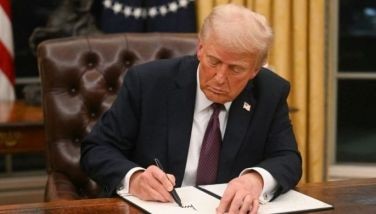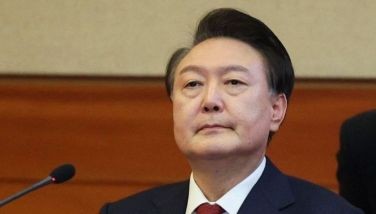Afghans poised to take security lead from US, NATO
JALALABAD — One of the most significant turning points in one of America's longest and costliest wars is imminent: Afghanistan's fledgling security forces are taking the lead for security nationwide, bringing the moment of truth on the question of whether they are ready to fight an insurgency that remains resilient after nearly 12 years of conflict.
Nowhere is that question more pressing than in this city near the Pakistani border, which is the capital of Nangarhar province. In the province, which has a predominantly Pashtun population, the ethnic group that makes up the Taliban, insurgents regularly ambush government forces, blow up the offices of humanitarian organizations, and control parts of a countryside that has seen a spike in opium poppy cultivation.
Nangarhar is considered so dangerous that foreign military forces still handle security in more than half of its 22 districts.
That will change, after Afghan President Hamid Karzai declares — in an announcement expected soon — that Afghan forces are taking over security around the country and US and other foreign forces will move entirely into a supporting, backseat role. At that point, the remaining districts in Nangarhar, along with other hotspots still in the hands of the US-led International Security Assistance Force, will become the Afghan troops' full responsibility.
Residents of Jalalabad, a bustling trading hub and agricultural center on the junction of two rivers, worry about whether the Afghan forces can keep them safe from an insurgency that they say is equipped and trained in neighboring Pakistan. They also fear that the Afghan forces still don't have enough heavy weapons or firepower.
"Our main concern is that for more than 10 years the international community managed to do nothing and that they are now trying to make us strong. It's too little too late," said Lal Mohammad Durrani, a member of the Nangarhar provincial council. "We need more weapons."
NATO training since 2009 has dramatically ramped up the Afghan National Security Forces, bringing it up from 40,000 men and women six years ago to about 352, 000 today. Once the transition is announced, coalition troops will move entirely into a supporting role — training and mentoring, and in emergency situations providing the Afghans backup in combat, mainly in the form of airstrikes and medevac.
That is to pave the way for international forces — currently numbering about 100,000 troops, including 66,000 Americans — to leave. By the end of the year, the NATO force will be halved. At the end of 2014, all combat troops will have left and will replaced, if approved by the Afghan government, by a much smaller force that will only train and advise. President Barack Obama has not yet said how many soldiers he will leave in Afghanistan along with NATO forces, but it is thought that it would be about 9,000 US troops and about 6,000 from its allies.
In a series of wide-ranging interviews with Afghan and western military officials, experts and analysts, opinions are mixed as to the state of readiness of the Afghan forces — although nearly all agree they are far better now than they were when the NATO training mission began.
British Lt. Gen. Nick Carter, the deputy commander of coalition forces, said the transition to take the lead in security "represents a significant achievement for the Afghan security forces." But, he added, "That said we will require and need to deliver for the Afghans some fairly significant support for a while to come."
Already, Afghans now carry out 90 percent of military operations around the country. They are in the lead in security in 312 districts nationwide, where 80 percent of Afghanistan's population of nearly 30 million lives — and only 91 districts remain for them to take over — including 12 in Nangarhar.
The transition comes at a time when violence is at levels matching the worst in 12 years, fueling some Afghans' concerns the forces aren't ready.
"We thought this summer would not be easy for the Afghan security forces, but it was not expected to be like this. We have roadside bombs, we have suicide attacks, organized attacks," said Jawed Kohistani, an Afghan political and military analyst. "It is a mistake to transition this quickly."
Jalalabad's relatively peaceful tree-lined streets are crowded with checkpoints, manned by often edgy Afghan army and police worried about car bombs. Insurgents use the province's mountain passes and valleys to sneak in from neighboring Pakistan, where they retain safe havens in that country's lawless Pashtun-dominated tribal belt. Jalalabad is also just a 3-hour drive through craggy passes and gorges to Kabul, which has seen a spate of spectacular suicide attacks in recent weeks.
Al Hajj Malak Nazir — the local head of the Afghan High Peace Council, a body created in an attempt to reach out to the Taliban — said that even though he considers Afghan forces to be under-equipped, he believes they will eventually prevail over the insurgency.
"The Taliban can't take all of Afghanistan. After transition they could take a district, but they won't be able to keep it," he said. That. He added, is why he has been trying to convince the Taliban to enter negotiations.
"This is a very good opportunity for the Taliban to say they will stop fighting. But they won't," he said. "The Americans are now saying they are leaving, but the Taliban never say they are leaving."
Few believe the Taliban will keep promises they have made in the past to stop fighting when foreign military forces are gone. They have not stopped in any province where Afghan forces have taken the lead.
They have also rebuffed numerous attempts to start peace talks in the past year and have instead intensified a campaign that mostly targets urban centers and government installations.
There is overall agreement, however, they don't have much support outside their traditional areas and can't win militarily against the Afghan forces.
"I think, if the Taliban tried to come back, it would have to come back in a very different way. It would have to come back and participate politically," Lt. Gen. Carter said. "It is my sense that civil society, which is the future of this country, absolutely would not put up with sorts of standards that were here 15 years ago. And, therefore, my sense is that ultimately it is the politics that will determine this, and not the violence that determines this."
On battlefields around the country, Afghan forces plan and carry out operations on their own, with little help from coalition forces. They are often effective, but still need work on logistics and effectively using the weapons they have.
Casualty figures are indicative of the fight. More than 330 Afghan army soldiers have died so far this year, according to a tally by the Associated Press.
Last year, more than 1,200 Afghan soldiers died, compared to more than 550 in 2011, according to data compiled by the Washington-based Brookings Institution. By comparison, coalition casualties have declined as they take forces off the battlefield — 81 so far this year, 394 in 2012 and 543 in 2011.
About 1,481 militants were reported to have been killed by coalition and Afghan forces so far this year, compared with close to 3,000 militants for all of last year. The NATO command does not issue reports on the number of insurgents its troops have killed, and Afghan military figures, from which the AP compiles its data, cannot be independently verified.
"There is no doubt about the ability of the Afghan national army and police. The nation should trust them, and they do," said the Afghan Army Chief of Staff Gen. Sher Mohammad Karimi.
The veteran commander rattled off a series of recent victories over insurgents, including kicking them out of parts of eastern Nuristan that they had controlled for about two years.
"There wasn't a single bit of support from the international community. Only the Afghan national army and national police were able to do that and they did it," he said.
But he grudgingly agreed Afghan troops still need help. That includes the use of coalition air power — including medical evacuations — help with locating roadside bombs and further developing the armed forces. They also need to bring down an attrition rate of 3 to 4 percent a month, which means NATO now has to help train 50,000 new recruits a year.
The US has said that Afghanistan will get the weapons it requires to fight an insurgency, including a large fleet of MI-17 transport helicopters, cargo planes and ground support airplanes. The heaviest weapon the Afghan army will have is a howitzer.
"The force is designed according to the threat, and the threat here is an insurgency. The design of the ANSF is appropriate to counter that threat," said German Gen. Hans-Lothar Domrose, the commander of the NATO force that oversees ISAF.
The Afghans, on the other hand, want battle tanks and modern fighter jets — which they are unlikely to get given their cost and the training required to use them.
The war has already proven very costly
Special Inspector General for Afghan Reconstruction John Sopko last April estimated that the ANSF has so far cost the American taxpayer $54 billion. The overall cost of the war is more difficult to estimate, but for America alone the Center for Strategic and International Studies put the price at about $650 billion through the end of 2013.
- Latest
- Trending































